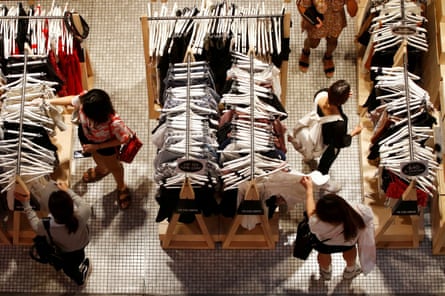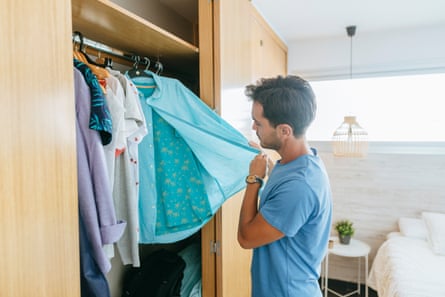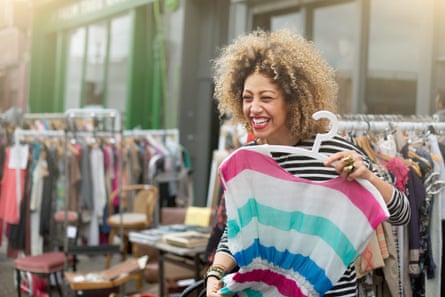
There is an art to buying a good present, from picking up on hints dropped throughout the year, to intuiting what someone might be coveting – especially if they’re someone who won’t spend money on themselves. After another tricky year, it’s a good Christmas to nail the art of balancing a useful gift with something nice. Like, perhaps, a new T-shirt or beautiful top.
But buying clothes for someone else is not for the faint of heart. From sizing, to colours, to sustainability there are many ways to get it wrong. Here, experts explain that if you’re buying clothes as a gift, it’s important to go in prepared.
Find out what they like
When buying clothes for someone else remember it is not about you. Jesus Manongdo, the Victorian operations manager for Incu, says to “come prepared with knowledge of [the person’s] sizes, what works with their skin tone, what cut or silhouette suits them and what brands they respond to”.
If you’re not sure, he recommends having a look at their wardrobe or asking someone who lives with them to sleuth for you. Take note of what colours they gravitate towards. Is it “conservative grey, blue or black” tones? Or “bright and showy” ones? Also pay attention to the shapes they wear, be it “A-line, loose fitting” or a preference for “certain necklines”.
Size them up

Finding something your recipient will like is only half the battle – the next challenge is making sure it will fit them. Start by checking their existing wardrobe “for a size spectrum”, says Manongdo.
Alternatively, if it’s possible, Jane Matthews, the owner of Swensk, suggests bringing an item from their wardrobe to match against items in-store. “In the right store the staff will be more than willing to help you test out your garment against things you like, as everyone wants you to get the right thing the first time,” she says. Another good trick – if you find a helpful sales assistant – is to show them a photo of the person. Matthews says it’s usually pretty easy to guess someone’s size from an image.
Finding out their favourite stores, and shopping in one them, is also a good strategy. That way, you can ask if they know the recipient. If the store records sales under client files you can even ask staff to look up what they already have, and in what size, she suggests.
Keep it simple

“I always encourage a jumper, top, tee or shirt before pants,” says Matthews. “Pants are so much harder to guess and across different pants and fabrics in the same style, the size can be different on the same person.”
According to Manongdo, “even buying a sweatshirt or fitness gear” can be tricky these days. And if you’re tempted to try and give a dress, he warns the fit is almost impossible to get right if the person you’re buying for can’t try it on. So if you’re really in doubt, nice socks are your best option.
And keep the receipt
Finally, one of the most important things is to check with the store about their return policy, and if returns are possible, then keep the receipt. If the return policy is strict and you’re not sure that person will fit into or love what you get them, buy a gift voucher from somewhere you know they shop. It might feel less thoughtful but it’s a better plan.
Manongdo says this is particularly important to keep in mind when shopping for anyone from Gen Y or Z, as they “are pretty territorial about their clothes-shopping autonomy”. “I wouldn’t even try,” he says, unless they specifically told you “this is what I want.”
Pre-loved gifts

Given the state of the environment and the economy, it might be a good year to introduce buy-nothing-new to your Christmas giving. Anita Vandyke, author of A Zero Waste Life and A Zero Waste Family, says when you’re intending to buy second-hand clothes as gifts, seek out “high quality materials”.
She recommends “classic staples such as cotton shirts, silk button-ups or linen clothing”. Before you buy, check the item thoroughly to make sure it has no stains or holes. Before giving the item she also recommends giving it an iron or steam-clean, to freshen it up for the receiver.
Finally, as returns on second-hand clothes may not always be possible, to remove the risk of getting the wrong size, opt for accessories like jewellery, scarves, ties or handbags. “I love gifting brooches, silk scarves, and vintage jewellery because they are so luxurious and unique,” she says.
Her final, no-waste tip is to make your wrapping paper low-waste, and part of the gift, by using something like a nice scarf, tote bag or tea towel.



